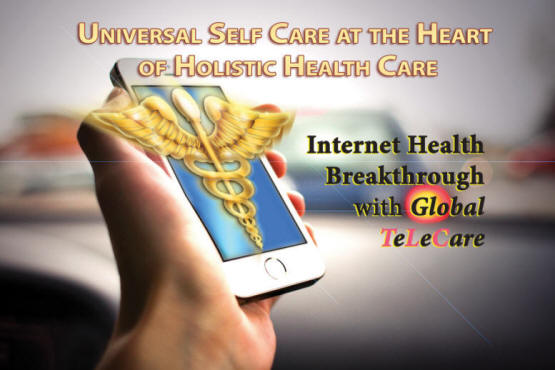|
The PC enabled entrepreneurs
to create word processors, spreadsheets, and many other desktop
applications. The internet enabled search engines, e-commerce, e-mail
and messaging, social networking, business apps, and many other
services. Smartphones enabled mobile messaging, mobile social
net-working, and on-demand services like ride sharing. Today, we are in
the middle of the mobile era. It is likely that many more mobile
innovations are still to come.
Each product era can be divided into two phases:
1) the gestation phase,
when the new platform is first introduced but is expensive, incomplete,
and/or difficult to use, 2) the growth
phase, when a new product comes along that
solves those problems, kicking off a period of exponential growth.
The Apple II was released in 1977 (and the Altair
in 1975), but it was the release of the IBM PC in 1981 that kicked off
the PC growth phase.
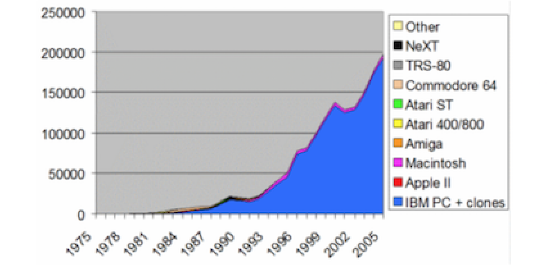
PC sales per
year (thousands)
The internet's gestation phase took place in the
80s and early 90s
when it was mostly a text-based tool used by academia and government.
The release of the Mosaic web browser in 1993 started the growth phase,
which has continued ever since.
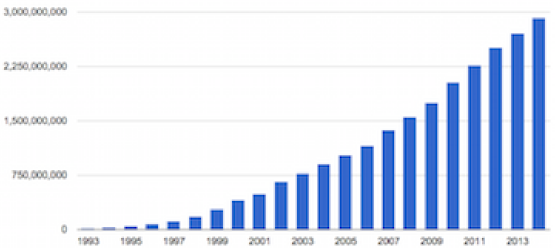
Worldwide internet
users
There were feature phones in the 90s and early smartphones like the
Sidekick and Blackberry in the early 2000s, but the smartphone growth
phase really started in 2007-8 with the release of the iPhone and then
Android. Smartphone adoption has since exploded: about 2B people have
smartphones today. By 2020,
80% of the global population
will have one.
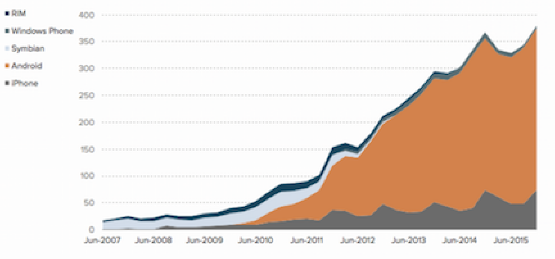
Worldwide smartphone sales per year (millions)
If the 10-15 year
pattern repeats itself, the next computing era should enter its growth
phase in the next few years. In that scenario, we should already be in
the gestation phase. There are a number of important trends in both
hardware and software [and netware with heartware ~CR] that give us a glimpse into what the next era of
computing might be.
Here I talk about those trends and then make some
suggestions about what the future might look like.
LAST PARAGRAPH:
Observers have noted that many of these new devices are in their
awkward adolescence.
That is because they are in their gestation phase. Like PCs in the 70s,
the internet in the 80s, and smartphones in the early 2000s, we are
seeing pieces of a future that isn't quite here. But the future is
coming: markets go up and down, and excitement ebbs and flows, but
computing technology marches steadily forward.
COMMENT
by Christopher Rudy:
Perhaps the most promising developing category of AI driven data
analytics will be for the analysis and
management of "holistic health choices"
(universal
self care)
as
introduced at
www.heartcom.org/GlobalTeLeCare.htm
See
also:
Global TeLeCare
Videos
~~~~~~~~~
Global
TeLeCare
Update at:
Global Transformation and Ascension
Seize the Vision – “TLC
Connection”
(Pure
Intention)
Embrace the Virtue –
Keep the Faith
(Focused Attention)
Commit with Valor – Make the Vow
(Love’s
Retention)
Claim
the Victory: Global
TeLeComm
(Personal/Planetary Ascension)
The
Sovereign
TLC
Dimension
Dedicated to the “One Eye”
(I Am)

   
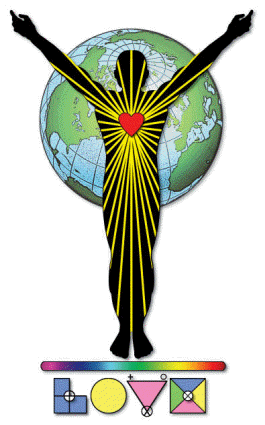
Full Spectrum
TeLeComm
To     with
all your strength, mind, heart and soul... with
all your strength, mind, heart and soul...
and
your Netizen neighbor in our global village as thyself.
.
|
